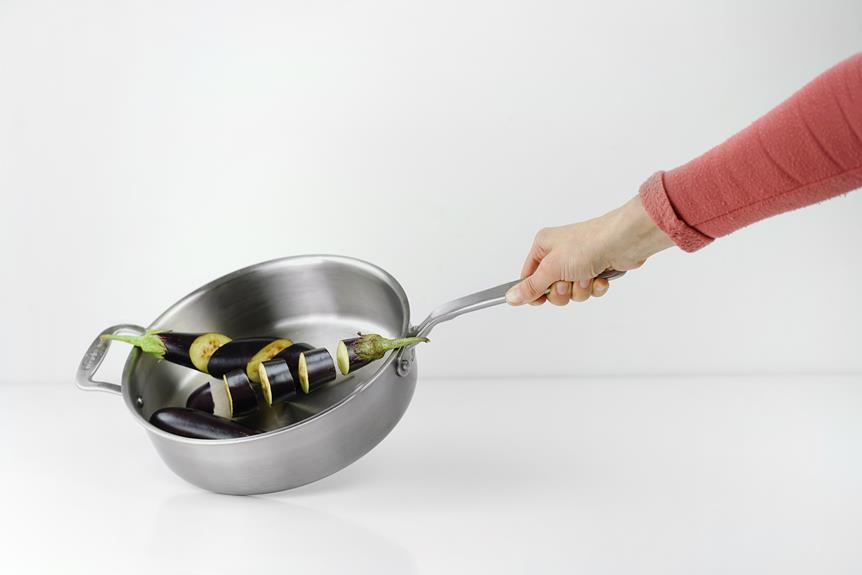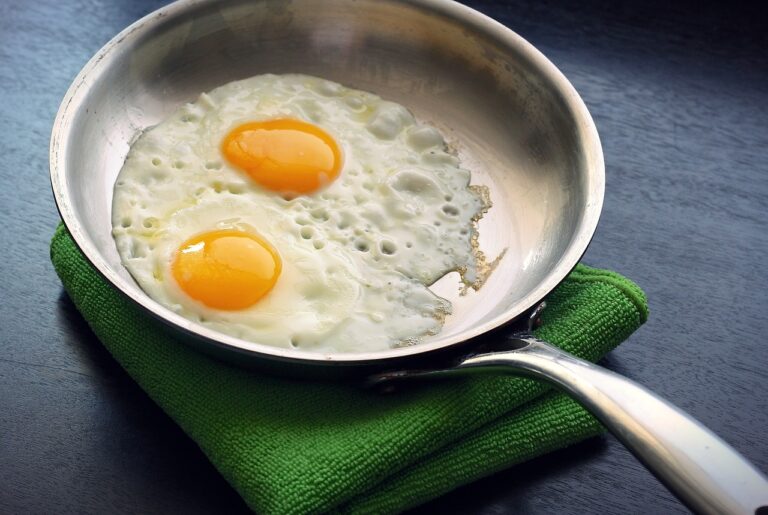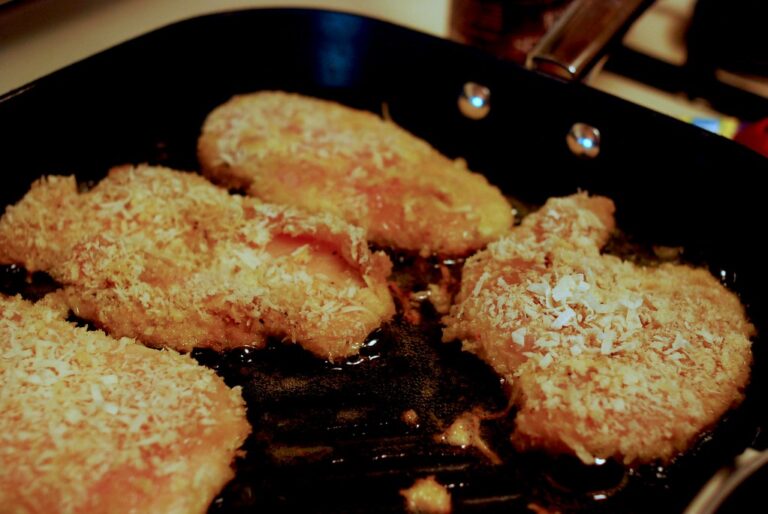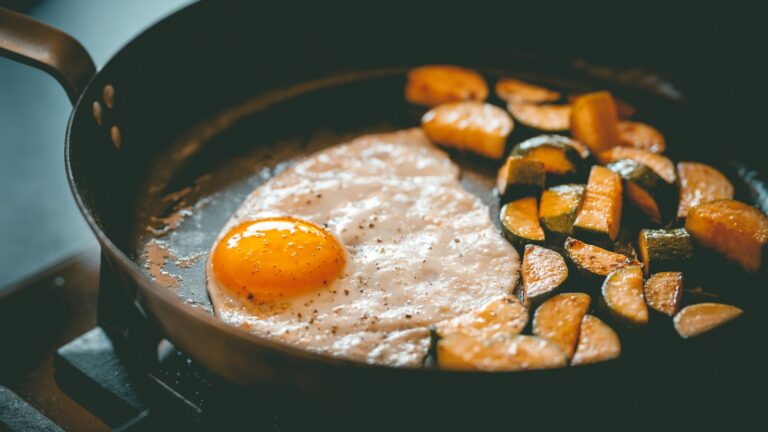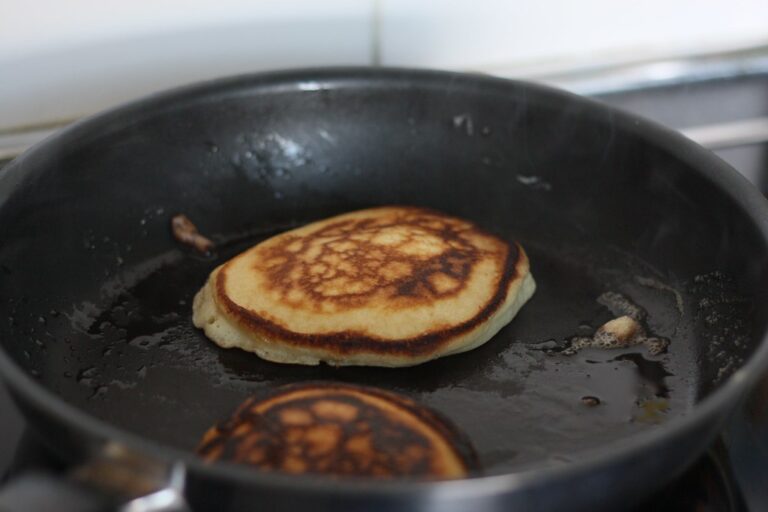I have always had food stick to my stainless steel pan when cooking. But after some trial and error, I’ve discovered a few tricks that make all the difference.
In this article, I’ll share my tips for choosing the right pan, preheating it properly, and selecting the right oil or fat.
Plus, I’ll show you how to season the pan for non-stick properties and cook your food to perfection.
Say goodbye to sticky messes and hello to deliciously crispy results!
Choosing the Right Stainless Steel Pan
I find that selecting the right stainless steel pan is crucial for preventing sticking when frying. Cooking techniques, cleaning, and maintenance are all important factors to consider when choosing the perfect pan.
When it comes to cooking techniques, a stainless steel pan is versatile and can be used for a variety of cooking methods such as frying, sautéing, and searing. It heats up quickly and evenly, allowing for precise and consistent cooking.
Cleaning and maintenance are also essential aspects to keep in mind. Stainless steel pans are generally easy to clean, requiring only a simple wash with warm soapy water. Regular maintenance, such as avoiding harsh scrubbers and using gentle cleaning agents, will help prolong the life of your pan and prevent any damage.
Preheating the Pan for Even Heat Distribution
To ensure even heat distribution, I always preheat my stainless steel pan before cooking. Preheating is an essential step in achieving perfectly cooked meals. Here are three reasons why preheating is so important:
- **Improved Cooking Efficiency**: Preheating allows the pan to reach the desired temperature before adding the food. This ensures that the ingredients cook evenly and at the right pace, preventing undercooked or overcooked spots.
- **Reduced Stickiness**: When the pan is preheated, a thin layer of oil or fat can be added before cooking. This creates a non-stick surface and prevents food from sticking to the pan. Preheating also helps in forming a delicious golden crust on meats and vegetables.
- **Enhanced Flavor Development**: Preheating promotes caramelization, which adds a rich and flavorful taste to your dishes. The high heat helps to brown the food, creating a delightful combination of textures and flavors.
Using the Right Cooking Oil or Fat
Using the right cooking oil or fat is crucial for achieving delicious and non-sticky results when preparing meals. When it comes to frying in a stainless steel pan, it’s important to consider the smoke point of different cooking oils.
Each oil has a specific smoke point, which is the temperature at which it starts to break down and release smoke. For high-heat cooking methods like frying, it’s best to choose oils with high smoke points such as avocado oil or peanut oil.
However, if you want to add a rich flavor to your dishes, using butter can be a great option. Butter has a lower smoke point compared to oils, but when fried in a stainless steel pan, it can create a beautiful golden crust while adding a delicious taste to your food.
Seasoning the Pan for Non-Stick Properties
Seasoning my pan with oil and salt before cooking helps to create a non-stick surface. It’s a simple step that goes a long way in maintaining the seasoning and ensuring a smooth cooking experience. Here are three reasons why using a stainless steel pan with a well-seasoned surface is beneficial:
- Versatility: A stainless steel pan is incredibly versatile, allowing me to cook a wide variety of dishes with ease. From searing meats to sautéing vegetables, the non-stick surface ensures that nothing sticks to the pan, resulting in evenly cooked and beautifully browned food.
- Durability: Stainless steel pans are known for their durability. With proper seasoning, the pan becomes even more resistant to scratches and stains, prolonging its lifespan. This means I can enjoy the benefits of a stainless steel pan for a longer time, making it a worthwhile investment.
- Ease of cleaning: The non-stick properties of a well-seasoned stainless steel pan make it a breeze to clean. Food residue easily releases from the surface, reducing the need for excessive scrubbing. This not only saves time and effort but also makes cooking a more enjoyable experience overall.
Properly Preparing and Cooking the Food in the Pan
When cooking in my well-seasoned pan, I make sure to properly prepare and cook the food to ensure a delicious result.
First and foremost, I always start by properly cleaning the stainless steel pan. I use warm soapy water and a soft sponge to remove any residue or food particles that may have stuck to the surface. This step is crucial in maintaining the non-stick properties of the pan.
Once the pan is clean, I focus on using the right temperature for frying. I preheat the pan over medium heat and wait until it’s hot before adding the oil and food. This helps to prevent sticking and ensures that the food cooks evenly.
Conclusion
In conclusion, by following these steps, you can fry in a stainless steel pan without the food sticking.
Choosing the right pan, preheating it properly, using the right cooking oil or fat, and seasoning the pan can all contribute to a non-stick surface.
Additionally, properly preparing and cooking the food in the pan can help ensure a delicious and evenly cooked result.
With these tips, you can enjoy hassle-free frying in your stainless steel pan.
